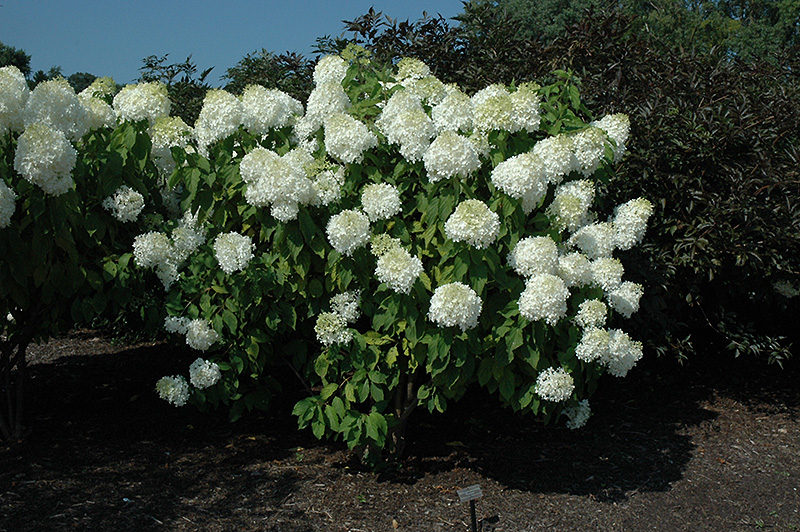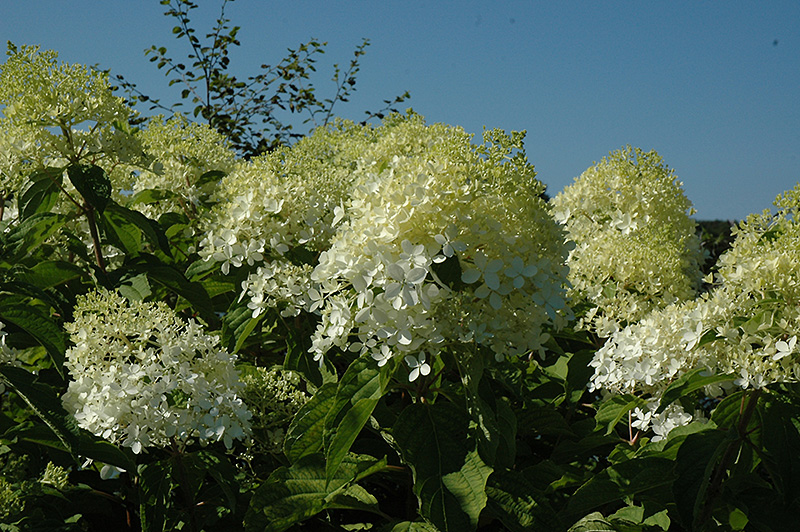Hydrangea Tree, Phantom Hydrangea paniculata 'Phantom' Height: 10 feet Spread: 10 feet
Sunlight:
Hardiness Zone: 3b Description: A bold and striking tree form that produces endless reams of massive and dense conical flower clusters at the ends of the branches, probably the fullest flower heads of the panicle hydrangeas; benefits from a regular pruning to keep it's shape. Ornamental Features Hydrangea Tree, Phantom features bold conical white flowers at the ends of the branches from mid summer to late fall. The flowers are excellent for cutting. It has green deciduous foliage. The pointy leaves do not develop any appreciable fall color. Landscape Attributes Hydrangea Tree, Phantom is a deciduous tree with an upright spreading habit of growth. Its relatively coarse texture can be used to stand it apart from other landscape plants with finer foliage. This tree will require occasional maintenance and upkeep, and is best pruned in late winter once the threat of extreme cold has passed. It has no significant negative characteristics. Hydrangea Tree, Phantom is recommended for the following landscape applications; Planting & Growing Hydrangea Tree, Phantom will grow to be about 10 feet tall at maturity, with a spread of 10 feet. It has a high canopy with a typical clearance of 4 feet from the ground, and is suitable for planting under power lines. It grows at a medium rate, and under ideal conditions can be expected to live for 40 years or more. This tree performs well in both full sun and full shade. It prefers to grow in average to moist conditions, and shouldn't be allowed to dry out. This plant should be periodically fertilized throughout the active growing season with a specially-formulated acidic fertilizer. It is not particular as to soil type, but has a definite preference for acidic soils. It is highly tolerant of urban pollution and will even thrive in inner city environments. Consider applying a thick mulch around the root zone in winter to protect it in exposed locations or colder microclimates. This is a selected variety of a species not originally from North America.![]()
![]()
![]()
![]()
![]()
![]()
![]()
![]()
![]()
![]()
![]()
![]()


